
Welcome To Early Earth Central.com!
This is an independent informational site covering the the Big Bang to the Early Earth, Early Life and the major Extinction Events. Items presented are in-depth, but all in laymen's language. Technical jargon is kept to a minimum.
Big Bang Theory
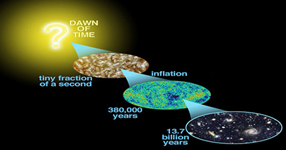
The Big Bang model has been extremely successful at explaining various aspects of the universe and has correctly predicted new observations. In the Big Bang model, time is run backwards until the universe reaches a critical density called the Plank Density. General Relativity ceases to be valid when the density of the universe exceeds the Planck Density.
Star & Planet Formation
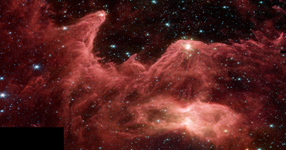
Stars emerge from clouds of gas and fine dust in regions that have collapsed under the effects of their own gravity. Eventually, dense hot cores form and ignite into stars. At first, these young stars are enclosed by the remaining gas and dust, which eventually settles into a planetary disc. Over time, the dust particles accumulate, growing into asteroids, comets and planets.
Early Earth
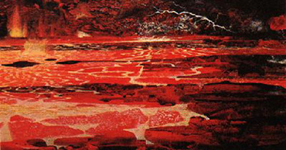
The very early earth was entirely different than it is today. It was extremely hot, about 1,800°C. The temperature of a thin hydrogen atmosphere and the surface of the earth were approximately the same. The surface probably consisted of flowing lava with "islands" of solid materials. The crust had not yet formed and there was no molten metallic core.
Early Life
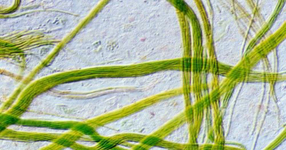
Cyanobacteria are a form of bacteria that obtain their energy from photosynthesis. They are frequently referred to as blue-green algae, but that is a mistake. Cyanobacteria are from the family of organisms called prokaryotes because their cells lack a nucleus surrounded by a membrane. Cyanobacteria include one cell organisms and also multiple cell species.
Extinctions Page
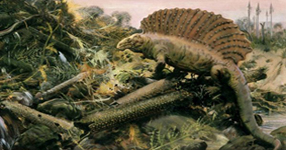
Some of the primitive reptiles, which measured up to ten feet long, had sail-like structures on their backs that acted as heat exchangers, catching the sun in the early morning to help warm themselves. See the dimetrodon illustrated above. Scientists believe a comet or asteroid impact led to the Permian Extinction in which 95 percent of all species perished.